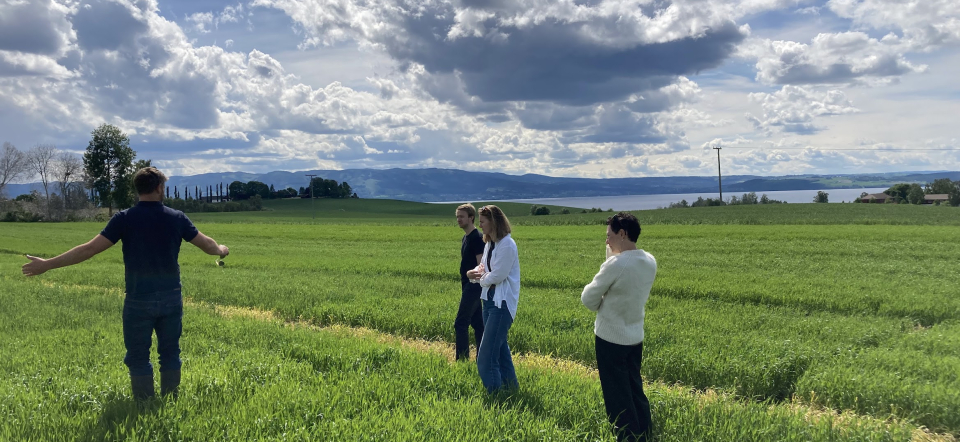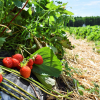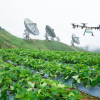The Nordic-Baltic region consists of many different sub-climates which is reflected in the different crop varieties in the countries of the region. For example, Norwegian barley and Danish barley are different varieties due to slightly different climates in these countries. Each country therefore develops and follows their own breeding programs and local companies are continually trying to make the crop varieties in their country better by collecting data and crossing lines.
“All breeding companies in the region know each other, but one thing they haven't shared is data. The problem is that the timeline for making a new plant variety is decades long. Right now, we are trying to make the barley for 20 years from now, the barley of the future. But we know that the climate is changing and so if the Norwegian plant breeders are sitting on their Norwegian data, optimizing the outcomes in Norwegian trials, they are going to end up with a target that is not actually adapted for the climate that they will have then”, says Alex Lenkoski from the Norwegian Computing Centre.
Lenkoski leads the research project Future Food Security in the Nordic-Baltic Region: Merging Past, Present, and Future. The project has partners from Norway, Sweden, Finland and Iceland and is building a joint database with data from all the official breeding trials in the Nordic and Baltic countries. The aim is to gain a better and broader picture of what breeding measures might work in the future in the different parts of the region.
“The first thing we have done gather data for three very important crops; barley, potatoes and clover. By the end of summer, we are expecting to release an open research platform database with as much publicly shareable data available on field trials across these different countries”, says Lenkoski.
Mapping the crops of the future
Taking it a step further the project is also building a statistical model for growing season indicators and a map on where to conduct relevant crop variation trials.
“Our industrial partners Graminor, Boreal, Sejet and Nordic Seed as well as other breeding companies are performing trials on their local fields. But to test a future variation they need to know where in the world there now is a climate that we can expect in the Nordics in the future. For example, if you're interested in selling a plant variety in the middle of Norway in the future, the answer to where you should do the trial now is southern Finland”, Lenkoski explains.
Another example he lifts is Romania.
“2018 was a weird year in Scandinavia, it was very hot and very dry the entire summer and we saw all sorts of crop failure. According to predictions that year will continue to be an outlier, but we are going to see more years with a climate somewhere between what we usually experience and 2018. So, we need to consider these warm, dry summers when breeding. And the answer on where we can find such a climate is southern Romania, because almost every single summer in southern Romania looks like 2018 did in Scandinavia. So, by finding out what crops they have there and beginning to cross their genetics with those of the Nordic varieties it can improve performance and resilience, so the future plant varieties survive the future Nordic summers”, he says.
Some factors such as solar radiation and amount of daylight are not comparable with Romania, so crossbreeding is needed. The Nordic varieties must deal with a longer illumination period then southern crops, so the aim is varieties with the structure of a southern crop and the resilience of sunlight of a northern crop. To be able to understand the differences in the trial outcomes and compare trials across countries the project has built statistical models for growing season indicators.
Nordic collaboration leading to open data
Even though getting all the data for the joint database has not been an easy path for the project, it has successfully enabled collaboration.
“Collecting data in different countries with different systems hasn’t been easy. We found that there is not a lot of communication between the different local institutes from which we received the data. But everyone agrees that this type of open database is necessary and that collaboration across the Nordic countries leads to much better results. Our project enables that collaboration to happen”, says Alex Lenkoski.
The next step for the project is to create a prototype for an application interface for the data and the map where the user can go in and fill in their location and find out where the best location for trials is. The industrial partners of the project will also be able to use the app to find out in which areas they can market their crop variety based on where the climate will be similar to theirs in the future.
“Each one of the stakeholder organisations, either from the research side, so the university sector, or from the industrial sector, will be able to use our database to understand on a genome-wide level how they can cross lines to get climate-resilient crops”, says Lenkoski.





